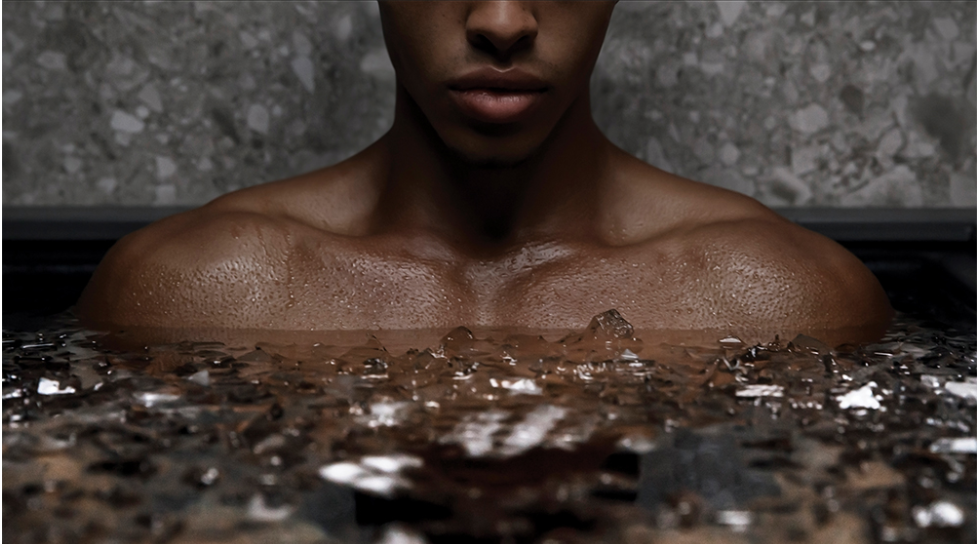
Are you seeking to enhance your physical performance, boost your mood, or boost testosterone levels naturally? Delving into the world of cold plunging could offer intriguing insights into these objectives. Cold plunging, involving submerging oneself in cold water for a brief period, has gained attention for its potential to stimulate physiological responses that affect mood, metabolism, and recovery.
The information on this page is based on data collected from numerous peer-reviewed research articles.
Below is a summary of the research methods, data, and conclusion of the article, Effects of Physical Exercise and Cold Stimulation on Serum Testosterone Level in Men , and an answer to the question “Does Taking an Ice Bath Increase Testosterone?”.
The Answer
No. Cold exposure, whether preceding or following exercise, leads to an immediate decline in serum testosterone levels.
Both scenarios involving exercise led to an acute rise in serum testosterone levels (+15% on average), while cold exposure resulted in an acute decrease (-9.17%). Group 2, which experienced cold exposure before exercising, exhibited overall increased testosterone levels (+10%) primarily due to the exercise regimen rather than the cold exposure itself. Group 1, which exercised prior to cold plunge actually experienced greater increases in serum testosterone after exercising (+20.8%) than the group which exercised after cold plunging (+10%). The group that cold plunged after exercise experienced an overall decrease in testosterone (-8.3%).
Serum testosterone levels naturally rise after exercise, increasing protein synthesis (muscle growth). These findings suggest that cold exposure immediately after a bout of exercise could potentially impede muscular hypertrophy due to the acute drop in serum testosterone. Cold plunging prior to exercise may be more effective for overall hypertrophy as exercise may negate the acute decrease in testosterone resulting from the cold plunge.
Notably, the group exposed to cold after exercise displayed the lowest overall serum cortisol levels, suggesting that post-exercise cold plunging, while not ideal for optimizing hypertrophy, might be more effective in reducing cortisol and enhancing mood.
Introduction
Traditionally, disciplines such as Judo and Karate have utilized cold water exposure in winter river sessions to enhance muscular development. This study aims to investigate the impact of both physical exercise and cold water stimulation, which offer distinct sympathetic nerve stimulations, on hormone levels, specifically focusing on testosterone and cortisol.
Methods
Participants
32 male college students aged 19
Group 1
Half of all participants (16)
Cycle ergometer prior to cold exposure
Group 2
Half of all participants (16)
Cycle ergometer after cold exposure
Cycle Ergometer
Participants cycled at an intensity of 90 Watts for 20 minutes
Cold Water Stimulation
Participants submerged their hands in 4 degrees Celsius (39.2 degrees Fahrenheit) water for two minutes, with one-minute breaks between each minute-long cold exposure bout.
Results
Group 1 (Exercise Before Cold Exposure) Serum Testosterone
Before: 4.8 ng/ml
After Bicycle Ergometer: 5.8 ng/ml
After Cold Water Exposure: 4.4 ng/ml
Group 1 (Exercise Before Cold Exposure) Serum Cortisol
Before: 11.5 mcg/dl
After Bicycle Ergometer: 8.5 mcg/dl
After Cold Water Exposure: 6.0 mcg/dl
Group 2 (Cold Exposure Prior to Exercise) Serum Testosterone
Before: 5.0 ng/ml
After Cold Water Exposure: 4.5 ng/ml
After Bicycle Ergometer: 5.5 ng/ml
Group 2 (Cold Exposure Prior to Exercise) Serum Cortisol
Before: 9.0 mcg/dl
After Cold Water Exposure: 8.0 mcg/dl
After Bicycle Ergometer: 10.0 mcg/dl
In both groups of participants, those who were exposed to cold prior to exercise and those who were exposed to cold after exercise, testosterone levels increased after exercise and decreased after cold exposure regardless of which came first. Interestingly, the lowest serum cortisol concentrations occurred in the group which exercised prior to cold exposure.



